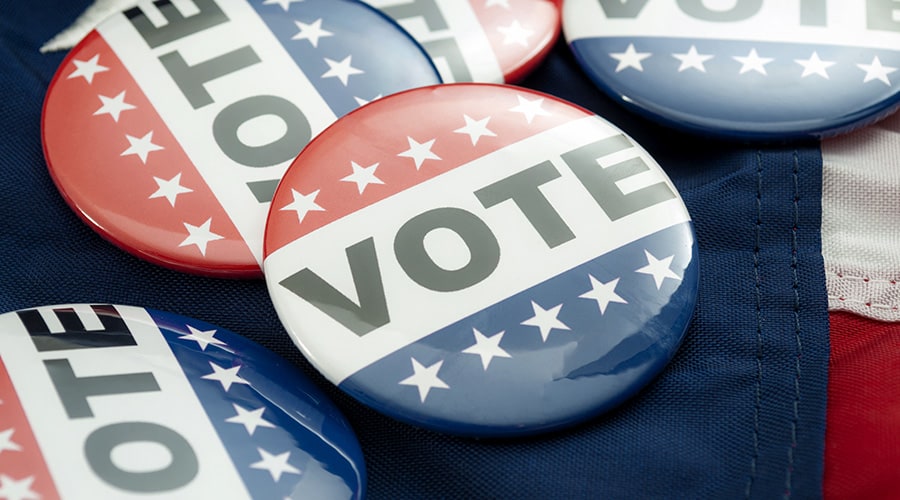
How OTs can establish a plan for persons with disabilities
In the days leading up to the election, accessible voting options for the November 3rd elections may have changed due to the pandemic (Vote.org). Voting instructions differ by state including deadlines when ballots must be received, vote-by-mail or absentee ballot options, and quantity and location of secure drop-off boxes from state Boards of Election. Concerns about the integrity of using the Post Office to mail ballots when high volume sorting machines have been destroyed in some locations has raised uncertainty about placing mail-in ballots in mailboxes or at the Post Office (Bogage & Ingraham, 2020; Fessler & Newman, 2020).
Voter registration windows are closing in some states. Clients need a voting plan to verify that they are registered to vote, know when voter registration ends in their state, and that they understand the accessible voting options for 2020. It may also be worthwhile to check mail-in or absentee ballot requirements for the need for identification, witness signatures, or a notary signature. The National Notary Association has a state-by-state guide with these requirements. Changes due to Covid-19 can be determined by contacting your state election board, or checking sites such as Vote.org, a non-profit, non-partisan site, with a link to Covid-19 changes per state.
Easter Seals offers a downloadable Voting Resource Card (Easter Seals, n.d.) to take to the polls with a list of contact phone numbers if a person with a disability has difficulty voting on the day of the election.
A Federal Voting Rights card explains disability voting rights and can also be downloaded to take to the polls.
Guide Sheet for Occupational Therapists
Prior to election day encourage clients to:
- Understand the process for registering as a voter with a disability.
- Reach out to their state or local elections office or board well ahead of election day to make their needs known to election officials.
https://www.aapd.com/wp-content/uploads/2017/04/10-Tips-for-Voters-with-Disabilities-EAC.pdf
- If voting by mail-in or absentee ballot, read all instructions carefully before filling out the form.
- Information to track ballots is included with mail-in ballots packets
- Know where drop off sites are located if they do not intend to vote in person or their state will not permit them to vote in person due to the pandemic
- Understand their state’s policy on how to return absentee ballots.
- If voting in person, visit the assigned polling site to familiarize themselves with the layout of the site
- Even if the person has voted at their assigned site for previous elections, the condition or location of the site could have changed creating accessibility issues.
- Familiarize themselves with alternative voting options available at their polling site.
- Voters with specific needs may need to submit documentation to use alternative voting options.
In-person voting on election day:
- Arrive at your polling site as early as possible.
- Be sure to have proper identification as defined by your state.
- Know how to report a problem at the polls
- The Election Protection Hotline can be reached at 866-OUR-VOTE. Assistance is available in languages other than English (Election Protection, 2020)
- If lines are long at their polling site and a PWD cannot tolerate standing, notify a poll worker for assistance.
After election day:
- Track their ballot
Resources
Bogage, J., & Ingraham, C. (2020, August 20). Here’s why the Post Office wanted to remove hundreds of mail-sorting machines. The Washington Post. https://www.washingtonpost.com/business/2020/08/20/postal-service-mail-sorters-removals/
Easter Seals. (2020). Voting resource card. https://www.easterseals.com/shared-components/document-library/advocacy/voting-resource-card-2020.pdf
Election Protection. (2020). Working 365 days to advance and defend your right to vote. https://866ourvote.org/
Fessler, P., & Newman, E. (2020, August 11). Ballot drop boxes become latest front in voting legal fights. NPR. https://www.npr.org/2020/08/11/901066396/ballot-drop-boxes-become-latest-front-in-voting-legal-fights.
Thun, D. (2020, September 21). A guide to state vote-by-mail ballot notarization. National Notary Association. https://www.nationalnotary.org/notary-bulletin/blog/2020/09/guide-state-vote-by-mail-notarization
U.S. Election Assistance Commission. (2016). Your federal voting rights card. https://www.eac.gov/sites/default/files/document_library/files/Your%20Federal%20Voting%20Rights%20Card%20Final.pdf
U.S. Election Assistance Commission. (2015). Quick start series No. 14: 10 tips for voters with disabilities. https://www.aapd.com/wp-content/uploads/2017/04/10-Tips-for-Voters-with-Disabilities-EAC.pdf
Ramona Guthrie, PhD, MPA, OTR/L, is assistant chair and an assistant professor in the Department of Occupational Therapy at Seton Hall University, Nutley, New Jersey. Dr. Guthrie serves on the University’s Diversity and Inclusion committee whose focus is on exploring and promoting diversity across curricula.
Meryl Marger Picard, PhD, MSW, OTR, is an assistant professor in the Department of Occupational Therapy at Seton Hall University, with expertise in wellness and health promotion, cancer survivorship, and reflection in clinical practice.





